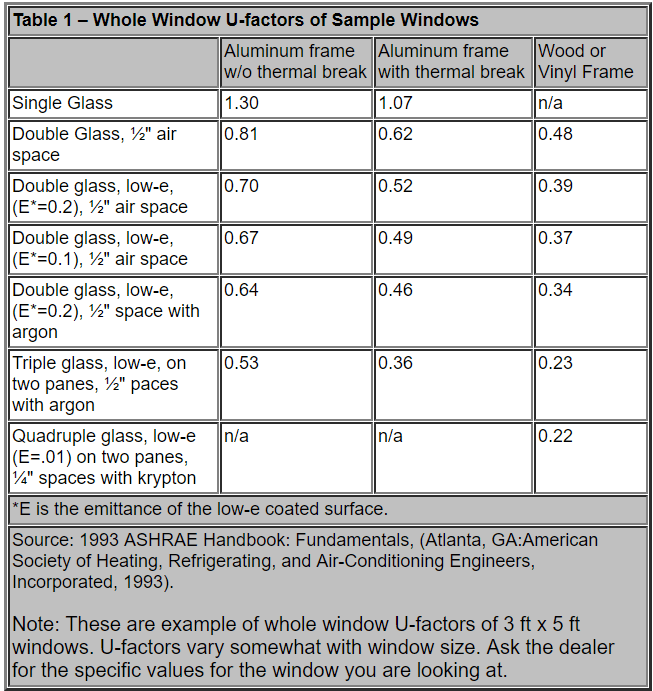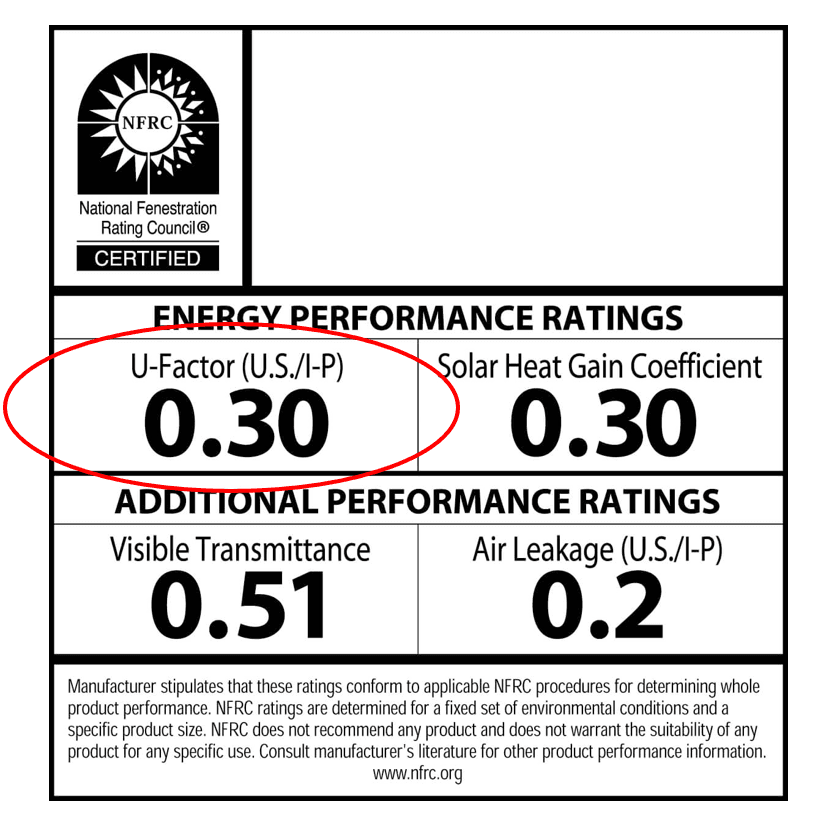If you're thinking about buying new windows for your home, one of the important energy ratings to pay attention to is U-factor.
Knowing what U-factor is, how it is affected by the energy efficiency of your windows and what type of U-factor to look for when purchasing new windows can help you pick a product that you'll be happy with for years.
Here’s what every homeowner should know and what we will cover:
- What Does U-Factor Measure?
- What Is a Good/Bad U-Factor Score?
- Where Can I Find the U-Factor Score on a Window?
- Why Should I Care About U-Factor?
- What Are the Benefits of a Low U-Factor?
- Does Geographical Location (Climate Zone) Impact U-Factor Score?
What Does U-Factor Measure?
U-factor is a rating system that measures the energy efficiency of building materials like doors, windows and skylights. This system was devised by the National Fenestration Rating Council (NFRC), and is used by the ENERGY STAR program (1, 2).
A combination of factors including transmittance of sunlight, air leakage and solar heat gain coefficient are used to determine U-factor.
On the U-factor scale, lower ratings indicate higher energy efficiency, and higher numbers indicate lower energy efficiency. For most homeowners, it's important to buy windows with the lowest U-factor rating possible.
What Is a Good/Bad U-Factor Score?
The most energy efficient windows will have a U-factor between 0.30 and 0.15. Double pane windows are usually closer to 0.30, while triple pane windows are usually closer to 0.15. U-factor refers to the entire window assembly, from the glazing to the window frame (3, 4).
Sometimes the performance rating of the glazing is measured independent of the rest of the assembly. This rating, known as the center-of-glass U-factor, is typically lower than the U-factor for the entire assembly.
In addition to double pane and triple pane window design, use of gas (argon) and low-e coatings can help improve the U-factor.

Where Can I Find the U-Factor Score on a Window?
Look on the window's sticker from the manufacturer. On that sticker, you'll find a variety of measurements and ratings. The U-factor is located in the upper left-hand corner of the sticker (5).

In addition to U-factor, you'll find a range of helpful measurements like solar heat gain coefficient, visible transmittance and air leakage (6).
Why Should I Care About U-Factor?
U-factor helps homeowners determine how well windows can help keep warm air inside the home.
U-factor is one of the important ratings that can help homeowners determine how well their windows will help regulate the indoor temperature in their home.
What Are the Benefits of a Low U-Factor?
There are many benefits to installing windows with a low U-Factor:
- Reduced Burden on the HVAC System
- Reduced Energy Bills
- Longer Service Life for the HVAC System
- Greater Comfort in the Home
- Increased Home Value
- Greater Satisfaction with the Windows
Creating a home that is comfortable and energy efficient is made better when you can save money and increase the life of your heating and cooling system (7, 8).
Does Geographical Location (Climate Zone) Impact U-Factor Score?
Some climates may require a lower U-factor score than others. In general, cold-weather climates require a lower U-factor than warm-weather climates.
In cold climates, the best U-factor is anything at or lower than 0.30. Hot southern climates need only a 0.60 U-factor, while mixed climates (with high temperatures in summer and low temperatures in winter), require a U-factor at or equal to 0.32 (9).
Choosing the wrong U-factor for your climate can lead to inefficiency and high utility bills. If you're not sure what type of U-factor is best for your climate, talk to a window contractor or window sales person. Window professionals will know the proper U-factor and solar heat-gain coefficient for the region where they are selling windows. The safest approach would be to go for both a low U-factor and a low solar heat gain coefficient.
